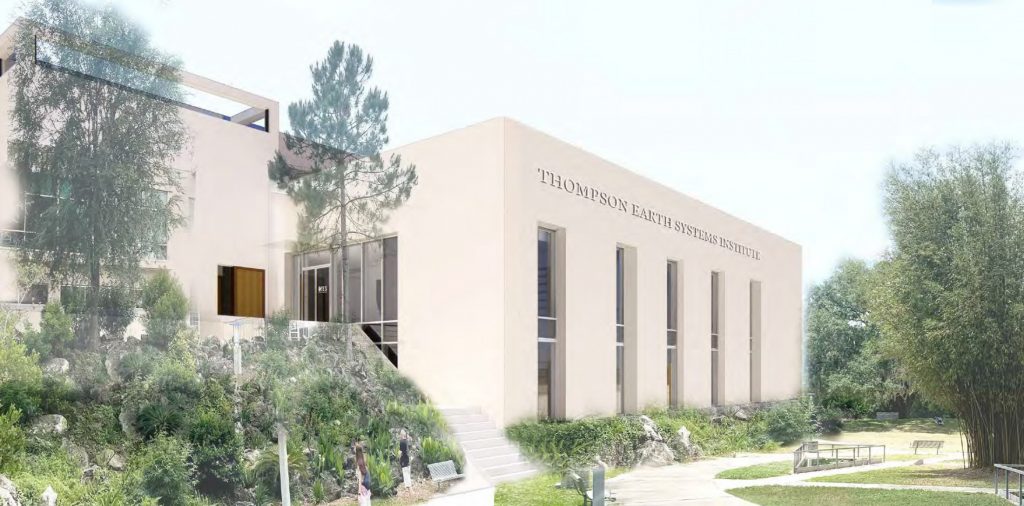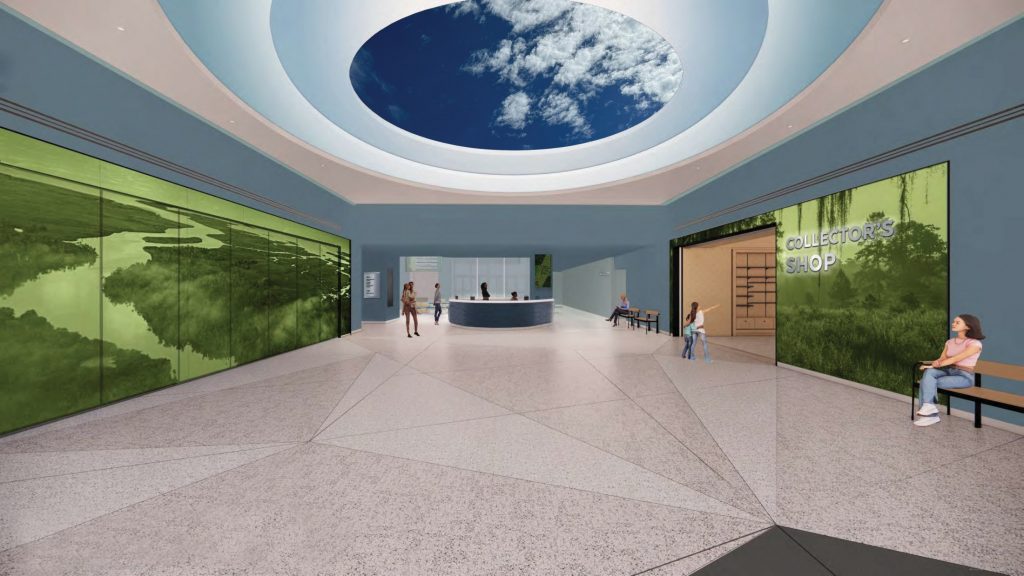The Florida Museum of Natural History began a large-scale expansion project on March 24, 2025 that has temporarily closed Powell Hall and its public exhibitions.
This expansion to the front of the building will allow the institution to better serve the community through new state-of-the-art exhibition and learning spaces, an updated modern facade, renovated and expanded guest services, and a larger collectors shop.
The Florida Museum anticipates re-opening in 2026.
Frequently Asked Questions
The expansion at Powell Hall will largely be contained to the front half of the building. A new exhibit space will focus on the value of science and the importance of life on Earth through self-directed exploration and interactions with scientists. The classrooms will be modernized, and the collector’s shop will be expanded to increase the footprint for new merchandise selections for visitors. The lobby area, front desk and restrooms in the Central Gallery will also be renovated. The museum’s Fossil Plant Garden will be incorporated into the new exhibit space and the outdoor picnic tables will be replaced with a new seating area. A new, two-story addition to the west side of the building will see the creation of additional offices and educational spaces for the Thompson Earth Systems Institute and the museum’s education department.
Department of Natural History research staff and faculty will be unaffected by the construction project and regular activities will continue in all 18 collections in Dickinson Hall, the McGuire Center for Lepidoptera and Biodiversity and the Special Collections Building, which are not open to the public.
Interns, graduate students, and collection volunteers will continue normal activities.
The Butterfly Rainforest is closed for the duration of the expansion project. As a living exhibit, it will continue to be maintained by staff during its closure. Shipments of new butterflies were paused starting on Monday, March 24, 2025. All other animals and plants will be cared for throughout the duration of the construction project.
The museum plans to reopen to the public in 2026.
A temporary closure was necessary to ensure visitor safety and to prevent a negative visitor experience; it also significantly shortened the length of the expansion project, allowing the museum to reopen sooner. With extensive construction activities taking place throughout the project, including demolition of the front of the building, providing a safe entrance and egress for visitors was not possible.
The Florida Museum’s membership program is still in effect and members will continue to receive the following benefits:
- Invitations to private member events held offsite during the closure
- Discounts and early registration for ticketed museum programs
- ASTC Passport program reciprocal benefits at 300+ museums worldwide
- Special “members only” communications, including updates about the project
- Free admission to the Randell Research Center and Calusa Heritage Trail in Pineland, Florida
- Knowing they are continuing their support for the Florida Museum of Natural History! Membership gifts impact every aspect of the museum – from its thriving research enterprise to the programs, exhibits and transformational projects like this expansion.
The following permanent exhibits will be deep-cleaned and refreshed during the closure but will otherwise be unaffected by the expansion: Butterfly Rainforest, Discovery Zone, Water Shapes Florida, the Wall of Wings and indoor butterfly exhibits, Florida Fossils: Evolution of Life & Land, Exploring Our World, Our Energy Future and South Florida People & Environments.
The Florida Museum of Natural History began rejuvenating its temporary exhibit gallery in September 2024 to upgrade components and technology. The upgrades — including state-of-the-art lighting equipment, new flooring and other enhancements — will boost energy efficiency, ambient lighting and visibility for objects on display. This crucial update was finished in early 2025 and will allow the museum to strengthen the infrastructure supporting changing exhibitions.
While the physical doors of the Florida Museum’s exhibit hall are temporarily closed, the museum will continue to have a dynamic, ongoing presence in the community, bringing new and expanded programming and engagement opportunities to audiences outside its walls. Some of the program possibilities include wildlife-friendly plant sales, lively pop-up exhibitions and engaging outreach opportunities.
Visit our calendar to stay up to date on the Florida Museum’s events.
Volunteer opportunities in Research and Collections within the Natural History department will continue. Current volunteers within the Exhibits and Public Programs department will work with their supervisors to find alternative roles during construction.

